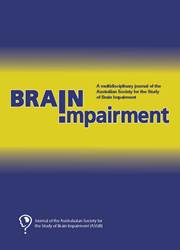Catatonia
Catatonia is a complex neuropsychiatric disorder characterized by motor, affective and cognitive-behavioral symptoms, presenting significant challenges for both psychiatrists and neurologists. It occurs in 5–18% of patients in inpatient psychiatric units and in 3.3% of those in neurology or neuropsychiatric tertiary care inpatient settings. Despite its relatively high prevalence, catatonia is often underdiagnosed and inadequately treated, which can lead to substantial disadvantages for patients and may be associated with potentially life-threatening conditions. This comprehensive guide is designed to assist clinicians, researchers, and students in understanding and treating catatonia. It navigates through the history of the condition, exploring its phenomenology, clinical manifestations and pathophysiology, before delving into effective treatment strategies. By providing a clear and thorough overview, this guide simplifies the recognition of catatonia and promotes prompt and accurate treatment, encouraging future research endeavours in catatonia.
- Provides clinicians, researchers, and students with the latest clinical and neuroscientific insights and recommendations on catatonia
- Features real-world patient cases, offering unique perspectives from the authors' clinical experiences with the condition
- Explores and analyzes the broader implications of catatonia for the fields of psychiatry and neuroscience
Product details
August 2025Paperback
9781009450959
174 pages
234 × 156 mm
Not yet published - available from August 2025
Table of Contents
- Foreword Gregory Fricchione
- Foreword Andreas Meyer-Lindenberg
- Preface
- Acknowledgements
- 1. Historical origins of catatonia
- 2. Different conceptual frameworks of catatonia
- 3. Phenomenology and subjective experience of catatonia – clinical cases
- 4. Epidemiology of catatonia
- 5. Clinical manifestation, complexity of catatonic signs, differential diagnoses and potential somatic consequences
- 6. Clinical, laboratory and neuroimaging assessments relevant for the diagnostic work-up of catatonia
- 7. Management and treatment of catatonia
- 8. Outcome and course of catatonia
- 9. Most common neuroinflammatory origins of catatonia
- 10. Brain networks underlying catatonia
- 11. Breaking new ground: novel approaches to understanding catatonia and the brain-mind relationship
- Index.






